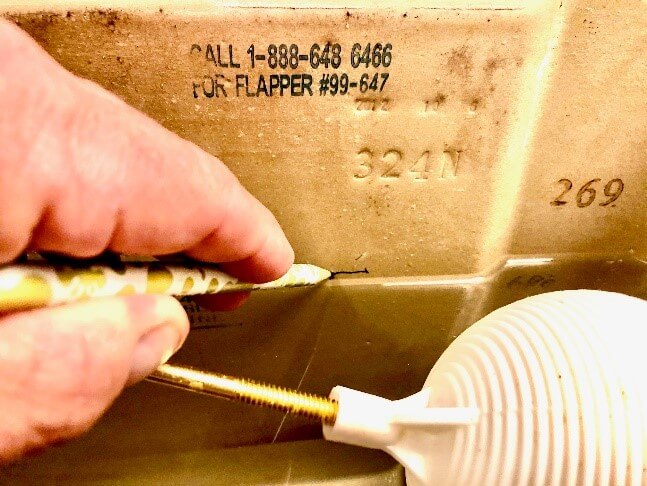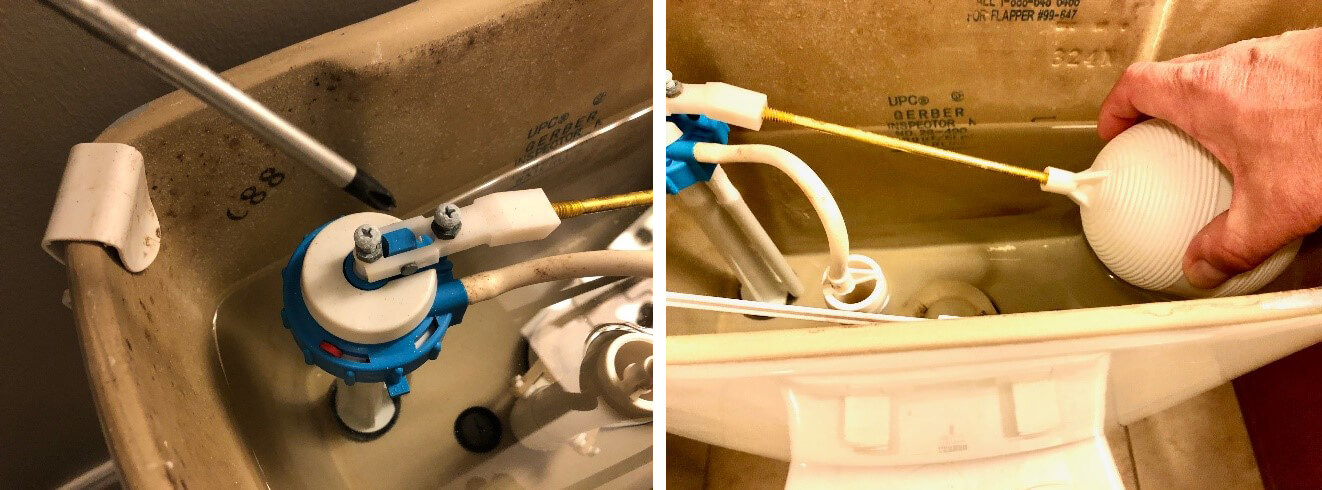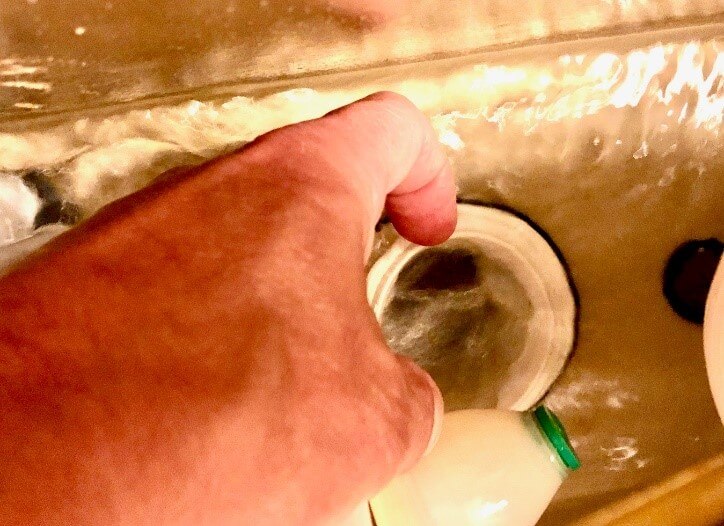What To Do When Your Toilet Keeps Running
A running toilet is an annoying plumbing problem. Jiggling the handle seems to be the universal advice, but that’s only a temporary fix until the next flush. Knowing how to fix a running toilet helps you save water and avoid high water bills: a running toilet can waste up to 200 gallons a day or 6000 gallons of fresh water a month! This guide will show you how to repair a running toilet.
Understanding How a Toilet Works
Because it’s so commonplace, it’s easy to forget that the humble toilet is a masterpiece of engineering. When you press the flush handle, here’s what happens:
- Pressing the flush handle lifts a flapper or stopper in the toilet tank, opening the flush valve and letting water flow into the toilet bowl.
- As tank water rushes into the bowl, the shape of the bowl and trapway creates a siphon effect, pulling waste down the drain.
- A float or pressure sensor in the tank detects the drop in water level, opening the tank’s fill valve.
- While the tank refills, fresh water fills the bowl for the next flush.
- As the tank fills, the float rises until it shuts off the fill valve, stopping water flow.
Common Causes of a Running Toilet
- Worn or damaged flappers
- Flapper chains that are too short or too long
- Malfunctioning fill valves
- Refill tubes that are too long
- Incorrectly positioned floats
What is the Most Common Cause of a Running Toilet?
The most common cause of a running toilet is a broken or worn flapper, so check this first if you suspect a toilet leak.
Tools Needed to Fix a Running Toilet
- Adjustable wrench
- Screwdriver (Philips or flat-head, depending on your toilet)
- Replacement flapper (if needed)
- Replacement fill valve (if needed)
- Towels to clean up spills
How to Fix a Running Toilet
Step 1: Check the Water Level

Check the water level to determine if you have a leak and, if so, how much it is leaking. If the toilet is constantly running, then you definitely have a leak. However, many toilet leaks are silent. To check for leaks, you have two options. The first step is to open the toilet tank, use a pencil to draw a line at the water level, and then turn off the water supply valve beneath the toilet. Come back in an hour and see if the water level has dropped below your line.
Your second option is to squirt five or six drops of brightly colored food coloring into the tank. Wait 30 minutes to an hour and check to see if the water in the bowl has turned the color of the food coloring. If it has, you have a leak.
Step 2: Check the Flapper

Next, check the flapper valve in your toilet tank. The flapper is the rubber piece that flips open when the flush handle is used. As the tank drains, the flapper slowly lowers back over the flush valve to close off the flow of water into the bowl.
Reach into the tank water (it’s clean) and feel the flapper. It should be soft and pliable. Over time, a flapper can get stiff and brittle and no longer provides a good seal with the flush valve.
In most cases, replacing the flapper will stop a toilet from running. While checking the flapper, you should also inspect the chain that connects the flapper to the flush handle arm. If it’s too long, the chain can fall between the flapper and fill valve, allowing water to drain into the bowl constantly. If the chain is too short, it can prevent the flapper from closing fully or making a good seal when closed. Watch our video to learn how to change a flapper.
Step 3: Check the Fill Valve and Float Ball
The fill valve is the tall piece that connects to the toilet’s water supply line. The top part of the fill valve connects to the float arm, and it has a float adjustment screw at the very top. When the toilet is running, lift the float ball and see if the running stops. Then check if the water level in the tank is high enough that it allows water to spill into the overflow tube. If so, this is probably why your toilet is running.
Adjust the float adjustment screw and the float to control the tank’s water level. You’ll notice the float attaches to a threaded rod. Turn it several times in one direction or the other to make the float sit lower or higher in the water. Ideally, the water level in the tank should be an inch or two below the top of the overflow tube.
Next, take a good look at the fill valve. Is water leaking out of the top? If so, it’s time to replace it. Plastic tank parts wear out over time, especially if you have hard water or use in-tank toilet bowl sanitizers.

Step 4: Check the Flush Valve

If you’ve replaced the flapper and adjusted the float ball, but the toilet continues to run, the most likely cause is a leaking flush valve. Usually, such a leak is around the mouth of the flush valve where the flapper is supposed to make a good seal.
Lift the flapper and run your finger around the edge of the opening where water spills through the flush valve and into the bowl. Check for burrs, uneven, or rough areas. If you find any, you may be able to even them out with some emery cloth or fine grit sandpaper. The goal is to make a smooth surface for the flapper to seal against. If that doesn’t work, we suggest replacing the flush valve. It’s possible that age and in-tank detergents have deformed the plastic. This requires you to turn off the water to the toilet and drain the water to the bottom of the tank, then soak up the rest with a towel to empty completely.
There’s no substitute for a professional touch.
None of the problems listed above are too concerning, as flapper and fill valves need replacing every few years, regardless of whether you suspect a leak. In some cases, the problem isn’t related to your toilet tank at all. High water pressure, for instance, can cause your toilet to run. A professional plumber can help resolve this issue.
If your toilet was built before 1994, it probably uses more than 1.6 gallons per flush, and you should consider replacing it with an efficient, modern toilet.
While toilets aren't complicated fixtures, it's important that all repairs and replacements are done right. If you're not the DIY type or just want expert help, contact your local Roto-Rooter today.